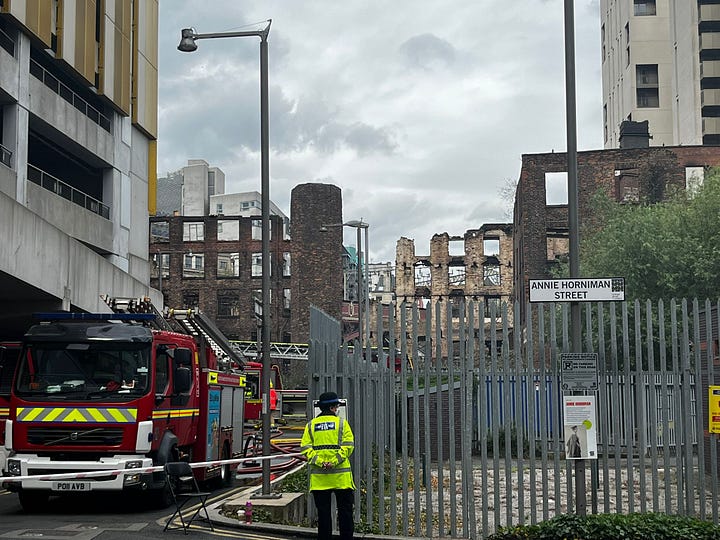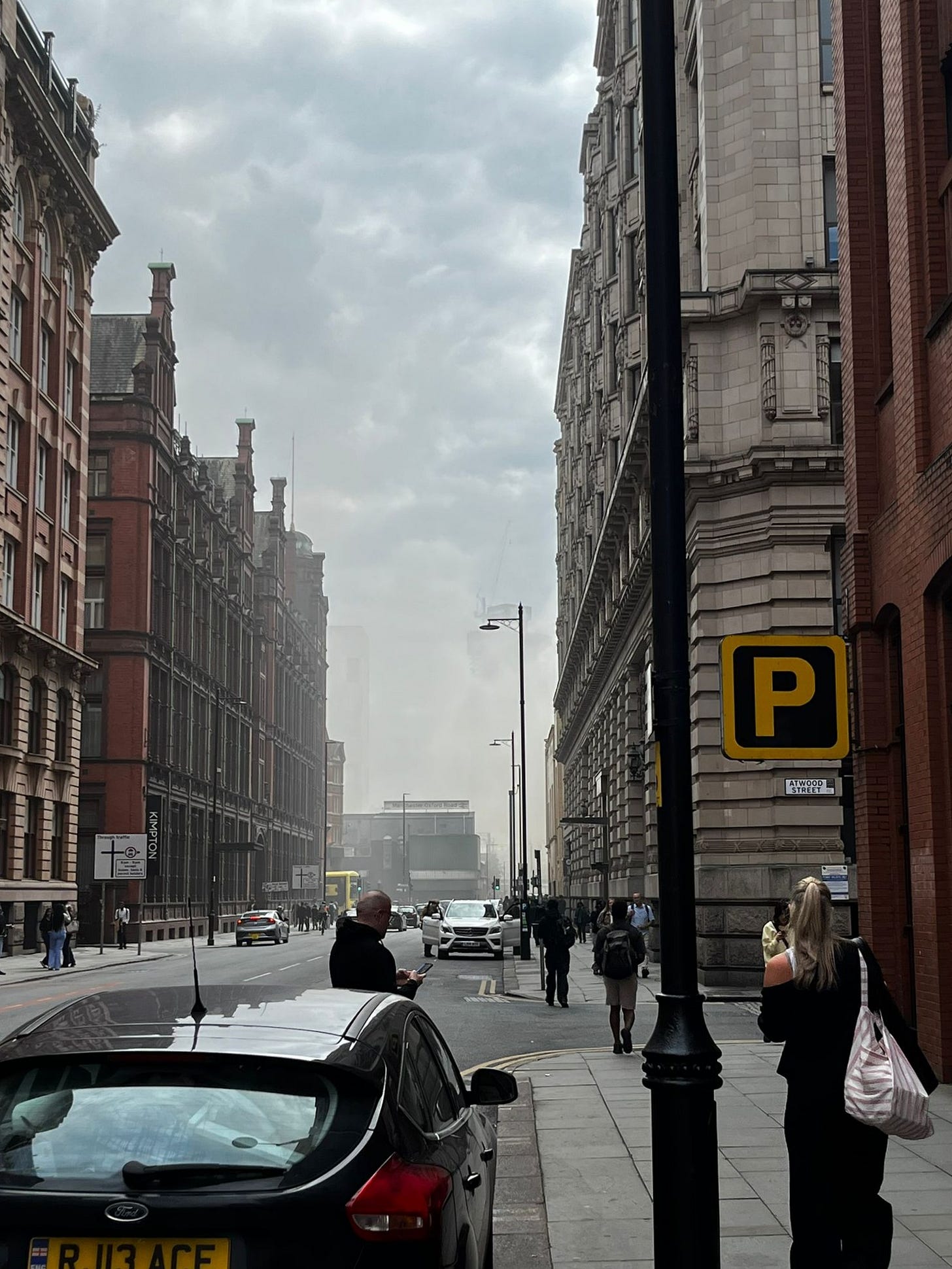The Hotspur Press Blaze: What It Reveals About the Spread of Conspiracy Theories
Dr. Adam North examines the conspiratorial claims originating from the Hotspur Press fire and if they reflect a feeling in the city.
On Monday, the 23rd of June, the old Hotspur Press building in central Manchester burnt down. Instantly Mancunians were quick to jump on social media and suggest that the developers had committed arson to avoid the expensive costs of saving parts of the original building and enabling them to fast-track a lucrative new skyscraper project.
I’m not going to comment on whether I think this conspiracy theory is or isn’t true — because no one can know yet — but I think it offers a useful route into understanding how conspiracy theories emerge and why they can be so appealing.
Why This Fire? Why Now?
The Hotspur Press isn’t just any old building. A relic of Manchester’s industrial past, it holds emotional and architectural significance for many locals. For decades, campaigners have sought to have the building listed and protected. The ‘Save the Hotspur Press’ campaign had success in ensuring that much of the building’s signage and outer walls would remain as facades for the new tower block.
But with the building now entirely destroyed, that hard-won success feels hollow. For locals who campaigned to preserve even fragments of the structure, the loss must be deeply disheartening.
When something symbolic goes up in flames, it leaves a vacuum of meaning—and that vacuum is often filled with suspicion. In the case of the Hotspur Press, that suspicion instantly became conspiratorial. The story of a shady developer pulling strings behind closed doors is immediately more compelling, and arguably more comforting, than the idea of a tragic accident or bureaucratic neglect — especially in a city already witnessing the rapid spread of luxury developments and gentrification.
The Appeal of the Hidden Hand
Conspiracy theories flourish in moments of uncertainty, especially when official investigations are slow, vague, or unconvincing. They thrive on the instinct that there must be a cause and a motive. The Hotspur Press blaze presented the perfect storm: a historic structure with clear economic potential, an opaque development process, and a general public weary of losing parts of their city to high-rise glass towers.
In such a climate, the idea that a fire might have been lit deliberately becomes not only plausible — it becomes emotionally resonant. It reflects wider anxieties: about who controls urban space, about the speed of change, and about who gets to decide what stays and what goes. The conspiracy isn’t just about the fire; it’s about power, memory, and agency.
The Power of Narrative Simplicity
There’s also the storytelling advantage. A developer secretly torching a building for profit is a clear narrative with heroes, villains, and stakes. Compare that to the alternative: a dry official report pointing to faulty wiring, poor maintenance, or sheer bad luck. It’s hard to grieve a city’s transformation through a technical malfunction. But it's easy to channel anger toward a faceless entity, whether that be the developers, the council, or capitalism. This isn’t to say that developers, councils, or market forces haven’t clashed with community interests—but it is important not to jump to conclusions.
However, clarity — however illusory — is often more satisfying than ambiguity. This is one of the central strengths of conspiracy thinking: it offers meaning where randomness and complexity exist.
A Mirror, Not a Joke
It’s tempting to dismiss the theories around the Hotspur Press as just internet noise or cynical speculation. But they also reflect something real and raw: people feel alienated from the decisions and the spaces that shape the city. They don’t trust the processes, the people behind them, or the institutions meant to deliver justice. Conspiracy theories, in this context, are a kind of grassroots storytelling — an attempt to take back narrative control in a world where most people feel like powerless observers.
This doesn’t make every theory true — or harmless. But it does make them worth paying attention to. They're clues to where the real distrust lies.


Conclusion: After the Smoke Clears
The fire at the Hotspur Press may or may not have a suspicious origin. But regardless of the investigation’s outcome, the conspiracy theories it sparked have already told us something important. They reveal a profound unease with the pace and direction of urban change, a lack of transparency in decision-making, and a hunger for explanations that feel emotionally and politically truthful — even when they lack hard evidence.
In that sense, the fire isn't just about bricks and timber. It’s about whose city this is, and what it means when the old is erased to make room for the new.


